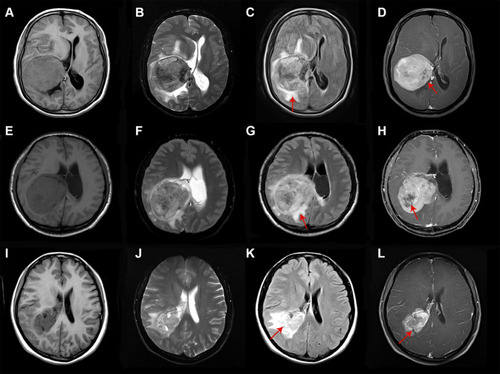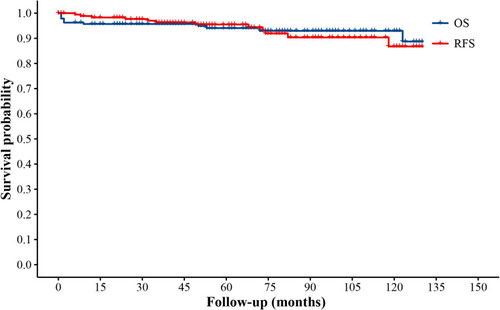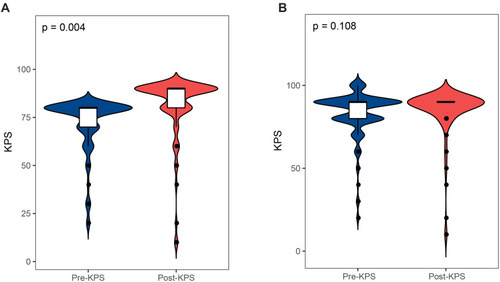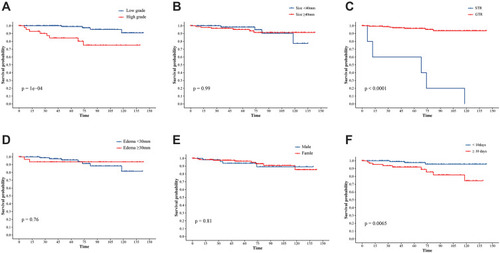Figures & data
Table 1 Patient Characteristics
Table 2 The MRI Features in the 118 Cases of LVMs
Table 3 Univariate and Multivariate Analysis of WHO Grade
Figure 1 MRI images of typical WHO I (A–D), WHO II (E–H) and WHO III (I–L) of LVM. Most MRI images show mixed-intense and heterogeneous enhancement. Typical low-grade LVM is relatively more regular and clearer boundary, while high-grade LVM has more obvious peritumoral edema and tissue infiltration. Heterogeneous enhancement and perifocal edema in which MRI sequences are indicated by arrows.

Figure 2 Kaplan-Meier survival curve illustrates the overall survival, and progression-free survival of 195 LVM patients.

Figure 3 (A) Violin plot illustrating a comparison between the pre- and post-KPS of 85 patients with preoperative KPS score≤80. (B) Violin plot illustrating a comparison between the pre- and post-KPS of all 195 patients.

Figure 4 Kaplan-Meier survival analysis illustrating risk factors for OS. A comparison between the OS based on the WHO grade (A), the tumor size (B), the pre-KPS of patients (C), the extent of edema (D), the gender (E), the MRI enhancement (F).



